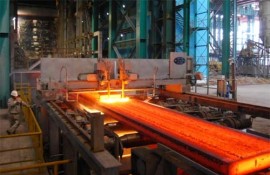
2013 has a very important policy, the central bank is July 20 fully liberalized financial institutions lending rate controls. 2013 full-year deposit rate and interest rates are not adjusted, but in fact within the tight loose outside, in addition to strict housing credit policy, the inter-bank market also appeared nervous. In mid-2013, and marked the end of the two funds are tight, squeeze the bubble in the field of finance and real estate at the same time. Until April 25, 2014 the central bank lowered the county rural commercial banks and rural cooperatives reserve, weak relaxation or orientation. Iron and steel enterprises, in 2013 so far, monetary policy is still no good.
Also in this situation within the tight loose outside, steel trade credit default fields began to appear after 2013 full year of fermentation, the first quarter of 2014 steel trade credit risk concentrated outbreak, steel trade financing gate field almost all are closed, the steel market in the middle part of the reservoir function of the growing “dry”, a direct result of the rise in steel stocks, funds exacerbated tensions mills.
In addition, since 2013 the industry investment shrinking, while steel production capacity has not “brake”, steel production further weakened profitability, the bank’s “pocketbook” the more grip more tightly, early this year, reflecting the major steel mills to obtain credit conditions are not optimistic, the individual steel companies have been drawn loan or even a funding strand breaks. It almost did not happen over the past few years.
2014 first-quarter impact of macroeconomic policies on the steel industry’s largest real estate control policies saw the results. Different from previous previous regulation, the beginning of 2013, “five countries” began implementation of a comprehensive credit limit restriction policy. Since real estate investment in the credit delay relaxing environment, the growth rate began to decline.
To the first quarter of 2014, commercial banks overall contraction of personal credit, mortgages and real estate development loans, the real estate company funds strand breaks, such as the recent media burst Qingdao, Shenzhen, real estate business, “bankruptcy risk“. Compared with the same period in 2010, the first quarter of 2014, real estate investment growth fell by about 20 percentage points. Real estate as an important area to squeeze the bubble, the price adjustment only just begun, it will not be a large-scale investment growth to rebound in the short term, and therefore will not boost steel demand in the short term.
2013 ~ 2014 first quarter, another important feature of macroeconomic policy is environmental policy continued to upgrade. From January 9, 2013, “industry response to climate change action plan (2012 – 2020)” Four ministries began, in 2013 China promulgated the national energy saving policy no less than 10, in 2014 environmental control efforts continue to increase , especially in North productivity and pollution control efforts to reduce the intensity of the biggest first-quarter production fell by 4.12%. Plus the introduction of the new “green law”, not only the role of environmental standards in production costs, but also opened the exit channel capacity.
In this policy environment, from the steel industry itself is concerned, overcapacity has not yet been alleviated contradiction, the industry is very negative. The current international environment is increasingly complex, and at a critical period of reform, initial results have not been before, macroeconomic policy is difficult to vigorously stimulate economic growth. Recalling the 2009 date, 2012 is the business contraction easing *** winter will last, but many mills did not decisively to adjust business strategy, industry-wide competition has continued, steel prices continue to decline.
The formation and development of this cycle, the decisive factor is monetary policy. After the financial crisis, the global economic growth mainly depends on monetary expansion, while nearly five years of China’s monetary policy tightening fluctuating trend. 2008 the central bank cut interest rates five times, in 2009 a year after extremely loose, 2010 ~ 2011 and five times to raise interest rates. 2012 two times and two times RRR cuts after 2013 into the stable monetary policy, growth in various sectors of the national economy has entered contraction phase, 2014 in industries with excess funds each situation starts to deteriorate in the first quarter, steel investment growth is slowing down.








